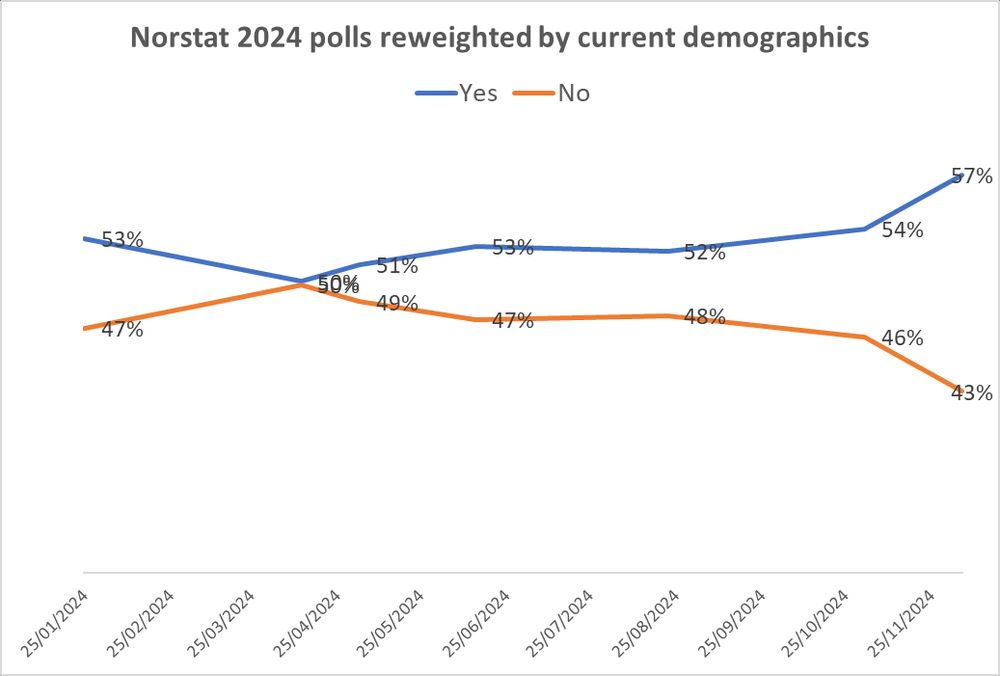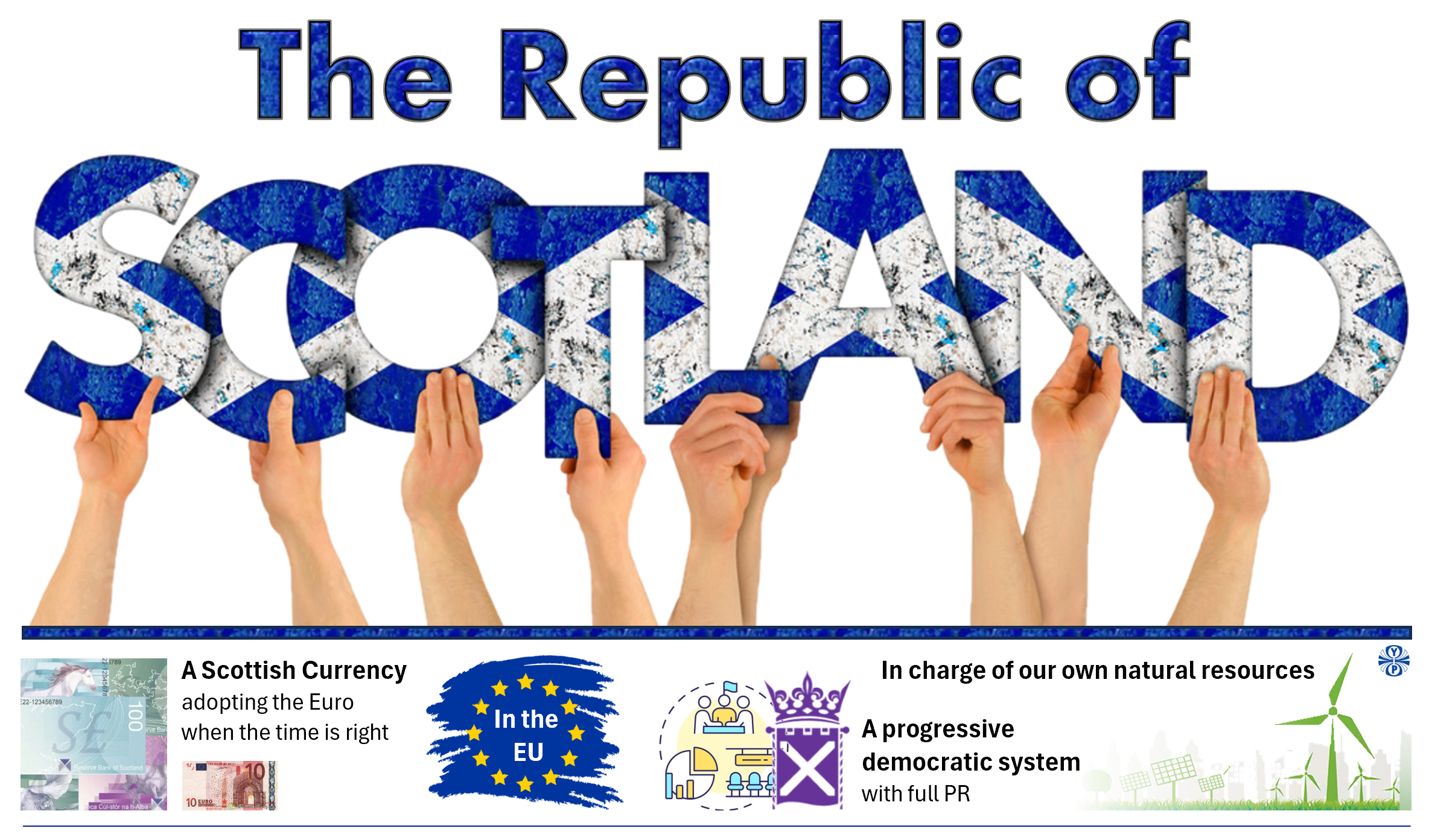Historically the Scottish Independence movement has thought that campaigning on more than just independence would dilute support. For example, campaiging for a Scottish Republic would put off independence supporters who liked the English monarchy being Heads of State.
But interestingly, a recent Norstat survey suggests that this thinking may be wrong.
Polling only on Independence
At the start of December 2024 Norstat completed a survey after the SNP had presented its Scottish Government budget. This showed support for independence standing at 54%. The question asked was
“How would you vote in response to the question: Should Scotland be an independent country?”
The results, like all independence polls since 2014, was weighted based on the 2014 independence referendum. This means that any differences between the profile of Yes and No voters in 2014 compared with this recent poll were adjusted out.
But since 2014 there has been an increasing support for Yes at lower age groups – and the No voting higher age groups have decresed in size. This change in demograpghics is therefore ignored. Adjusting for this increases the Yes vote in this poll to nearer to 57%.
Looking at recent results with the 2014 weighting removed is quite revealing:

Polling for a Republic
Norstat ran a matching poll to the December Independence poll detailed above. But, at the request of Believe in Scotland, it included an additional question:
“If Scottish independence meant that Scotland would be a republic – meaning the King would no longer be the head of state, so Scotland’s governance would be fully democratic and not a monarchy – how would you vote if there were an independence referendum tomorrow?”
Using this question the weighted result was 59% Yes. There was a marked increase in Labour and LibDem supporters in particular:

So what if also remove the 2014 weighting from this result? This is what it looks like:

A large majority in favour of The Independent Republic of Scotland, with significant support across all political parties.
Wellbeing Economy and Pension boosts support even further
Believe in Scotland also tested how attractive an independent Scotland might be if it pursued a Wellbeing Economy and Pension. Whilst these questions would never be used in a referendum, they’re useful as an indicator of how attractive the likely benefits of independence might be.
The Wellbeing Economy question polled was:
If an independent Scotland meant that Scotland would implement a Wellbeing Economic Approach (a plan that recognises that quality of life, equality, fairness, sustainability, happiness, and health were all economic outcomes that should be given equal weight to growth in economic planning) – how would you vote if there was a Scottish independence referendum tomorrow?
And the Wellbeing Pension question polled was:
If the Wellbeing Economics Approach (detailed above) also included a commitment to increase the basic state pension from £169.20 to a Wellbeing Pension of £241.50 per week, how would you vote if there was a Scottish independence referendum tomorrow?
The impact of these on support for independence was:


Leave a Reply